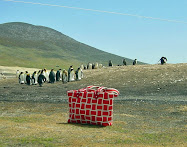Reading little augury's posts featuring the painter Jean Etienne Liotard (1702-1789) here and here, it reminded me how the fascination with orientalism ran and ran. In the collective European imagination the Turkish and North African 'Orient', has long been a site of fantasy. The louche harem dress and those lounging poses must have been dynamite to the tightly-buttoned 19th century armchair travellers and dreamers.
Eugene Delacroix's Women of Algiers 1834, The Louvre
Henri Matisse combined modernism with the tradition of the salon painters in his matchless series of odalisques. I suspect these paintings arrived from a collision between his love of the female form and his lifelong involvement with textiles, which will be the subject of a later post. Meanwhile I brighten up a dull day with these stunning paintings and drawings.
Seated Odalisque 1926, The Metropolitan Museum of Art, New York
The Lamé Robe 1932, Yale University Art Gallery
Large Odalisque with Bayadere Costume1925, Victoria and Albert Museum
'Odalisque' : 'a female slave or concubine in a harem, especially one in the seraglio of the sultan of Turkey.' It derives from the Turkish word oda - chamber and lik - function.
All Matisse images from Matisse - His Art And Textiles pub. Royal Academy of Arts 2005











































I still wonder why Manet's Olympia provoked such an outcry when the odalisque had been a fixture of French academic painting for decades. I've heard it suggested it was because she returned the male gaze dead on. Maybe it's more because the model is clearly in it for the cash.
ReplyDeleteI've never painted a nude that I would display in my house, except for a couple of Valloton copies. It's a very difficult thing to bring off without being creepy.
BTW Rose, your post today made me wonder how much of an influence Vuillard may have been on Matisse.
I thought it was the pussy cat? And the black maid against her marble skin. You are probably right. She is almost insolent.
ReplyDeleteI have just looked at Vuillard on the net as I confess I have rather overlooked him over the years. There is certainly a lot of patterning in his interiors.
I guess I never thought of odalisque as a synonym for concubine, but
ReplyDeletehow could it be otherwise?
I know Mr Worthington, and it's much better than female slave. Perhaps one shouldn't celebrate odalisques but the name is so seductive.
ReplyDeletewhat an incredible post.
ReplyDeleteyou have a lovely blog.
x
Renee, thank you for your very kind comment.
ReplyDeleteCan we see your paintings on the subject please :)
ReplyDeleteI do think it is strange that we feminists are drawn to these images. I, myself, blame it on stripes and patterns. Gets me every time. And I second Ms. Polskey's nomination.
ReplyDeleteHome, I agree entirely. Thanks for producing the stripes and patterns defence!
ReplyDeletePolskey, I ought to produce a pair of harem pants for the model at my life class. Not a bad idea come to think of it.
Wow these are fantastic they have such a vividness to them, the colors really make the paintings come alive, thanks for posting!
ReplyDeleteOdalisques & orientalism are fantastic themes because they reflect fantasies rather than reality. Matisse or Delacroix may have gone to "the Orient" (the Near-East) but their paintings are not realistic. Odalisques are expressing the fantasies of their time & place under the cover of another time & another place.
ReplyDeleteThanks for sharing these great works.
http://davidikus.blogspot.com/